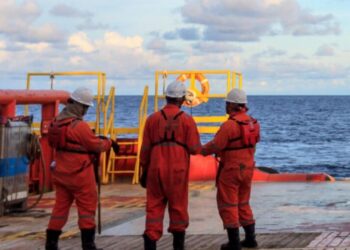The management of residues from solid bulk cargoes is a critical aspect of marine environmental protection, particularly under the current framework of MARPOL Annex V, which came into effect on January 1, 2013.
Notably, the 2013 amendments introduced a prohibition on the discharge of residues from solid bulk cargoes deemed harmful to the marine environment (HME). However, despite the significance of these regulations, MARPOL Annex V does not specify mandatory criteria for the classification of cargoes as either HME or non-HME, presenting challenges in enforcement and compliance. This gap underscores the need for clearer guidelines to ensure effective safeguarding of marine ecosystems from potentially harmful discharges.
Defining cargo residues in MARPOL
The definition of cargo residues under Annex V refers to the remnants of any cargo not covered by other Annexes of the convention, which remain on the deck or in the holds following loading and unloading. This includes excess cargo or spillage that occurs during loading and unloading, whether in wet or dry conditions, or entrained in wash water. However, it does not include cargo dust remaining on the deck after sweeping or dust on the external surfaces of the ship.
Cargo residues are included in the definition of garbage as per Annex V, regulation 1.9, and may be discharged in accordance with regulations 4.1.3, 6.1.2, and the Polar Code. However, cargo material contained in the cargo hold bilge water should not be treated as cargo residues if the cargo material is not harmful to the marine environment and if the bilge water is discharged from a loaded hold through the ship’s fixed piping bilge drainage system.
Cargo residues result from inefficiencies in the processes of loading, unloading, and handling on board. Options to consider for reducing the amount of such garbage include the following:
- Ensuring that ships are suitable for carrying the intended cargo and for unloading the same cargo using conventional unloading methods.
- Unloading cargo as efficiently as possible while utilizing all appropriate safety precautions to prevent injury, as well as damage to the ship and equipment, and to avoid or minimize cargo residues.
- Minimizing spillage during transfer operations by carefully controlling cargo transfer procedures, both on board and from dockside. This should include effective measures for immediate communication between relevant ship and shore-based personnel during transfer operations, and, when feasible, the enclosure of conveyance devices such as conveyor belts. Since spillage typically occurs in port, it should be completely cleaned up immediately following the loading and unloading events and handled as cargo, either by delivering it into the intended cargo space or into the appropriate unloading holding area.
Cargo residues under Annex V are separated into two categories. Since there is no list of substances that are harmful to the marine environment (HME) under MARPOL Annex V, solid bulk cargoes must be classified and declared by the shipper regarding whether or not they are harmful to the marine environment. Such declarations should be included in the information required in section 4.2 of the IMSBC Code.
Category J – Cargo residues (Non-HME)
- Discharge at sea is permitted when the vessel is not in a special area and is more than 12 nm from the nearest land.
- Within special areas the discharge at more than 12 nm from the nearest land is only permitted if the non HME cargo material contained in the cargo hold bilge water.
- Such discharges shall only be done under the supervision of Garbage Designated Officer (as per Garbage Management Plan) and relevant entry is be made in the garbage record book.
Category K – Cargo residues (HME)
- Cargo residues are considered harmful to the marine environment and subject to regulations 4.1.3 and 6.1.2.1 of the revised MARPOL Annex V if they are residues of solid bulk substances which are classified according to the criteria of the United Nations Globally Harmonized System for Classification and Labelling of Chemicals (UN GHS)
- As per MEPC.69 outcome, dated April 2016, cargo hold wash water from holds previously containing solid bulk cargoes classified as HME may NOT be discharged at sea but to be delivered to appropriate Port Reception Facilities.
Discharge into the sea is prohibited. Cargo residues classified as HME should be delivered to appropriate Port Reception Facilities. However, Cargo residues that are harmful to the marine environment may require special handling not normally provided by such reception facilities. Ports and terminals receiving such cargoes should have adequate reception facilities for all relevant residues, including when contained in wash water
Key Considerations
Handling cargo residues on board dry bulk ships requires adequate training and knowledge of regulations. Specific documentation should be obtained, particularly from the shipper, to determine whether the cargo to be handled is considered harmful or not. When referring to special areas, the POLAR Code restrictions should also be taken into consideration. If there are no adequate port reception facilities for discharging cargo residues, the master should report this to the ship manager for further action.


































































